The history of the plant began in the middle of the World War I with the Highest approval of Council of Ministers by the emperor Nicholas II of a regulations on issue of the large order for military department to five Russian automobile plants among which was also JSC Russian Renault. The plant in Rybinsk was constructed from scratch in the shortest possible time. The main production site of the company located in St. Petersburg (now Klimov Plant). In 1917 the plant began assembling Renault aviation engines for the Ilya Muromets aircrafts. Then the Management of the Military and Air Fleet suggested to place the order for production of several hundred aviation engines in Rybinsk but the Revolution of 1917 interfered with these plans.
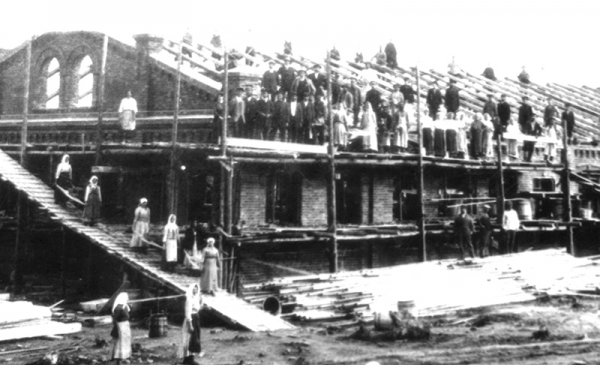
The construction of the first factory buildings of JSC Russian Renault in Rybinsk, 1916
In the summer of 1918 the plant was nationalised, and began restoring cars for the need of the Red army. But already on May 10, 1924 the government issued a decree about the transfer of the plant to the system of the aviation industry enterprises, where it received its historical designation The Plant №26. So the history of the Rybinsk aircraft engine production has begun. At the end of 1926 it was decided to arrange the production of the BMW-VI engine in the USSR. It became a prototype of the Soviet M-17 engine for R-5 scout aircrafts and the heavy TB-1 and TB-3 bombers. Over the next 10 years about 8 thousand M-17 were made on this plant. It allowed the Soviet Government to abandon the purchase of engines abroad.
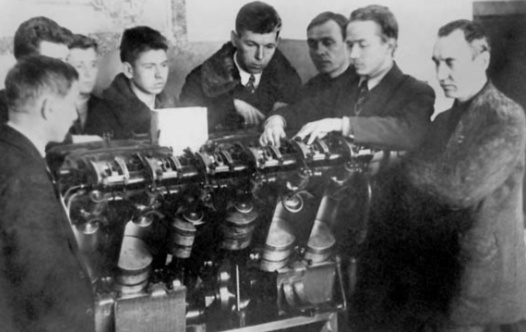
Studies of the M-17 engine on the plant worker’s qualification courses
In 1930 in Rybinsk began a pilot production of the M-34 engine, due to which Valery Chkalov made the first 56-hour non-stop Moscow - Arctic - Far East flight on ANT-25. In 1935 the design bureau of the plant was headed by Vladimir Yakovlevich Klimov, under whose leadership was created a "hundreds" family - M-100, M-103, M-105 engines, for such development the plant was awarded with the highest award of the Soviet state - the Order of Lenin. However all this progress didn't help employees of the plant to avoid the bloody 1937. The plant many leading experts among including the Director of the plant G.N. Korolev, who was removed from the office and executed. Alas the official chronicle tried not to mention those events. The archives contain a lot of information about hard times and heavy atmosphere in the company. For example, in the process of recreating the full history of the company for the 100th anniversary the employees unexpectedly found names of 3 more «lost» plant managers in the archived documents.

V.Y.Klimov, V.P.Balandin, P.D.Lavrentev, D.I.Golovanev, A.M.Myzdrikov, 1939.
Then came the heavy 1940s. On the eve of war the government required significant increase in the engines production. Since the beginning of 1941 the plant management on a daily basis sent daily reports to the country leaders about the number of engines. But when the fascist troops approached Tver in fall it was decided to evacuate the plant to Ufa. Practically in two weeks of 14500 workers, 1700 technical employees, 1300 employees with all equipment and 300 sets of motors, dismantling even power cables, on barges, trains, cars left Rybinsk. At the same time the operation was so secretive that later the German aviation was performing air raids on the empty factory buildings for a long time, thinking that the plant continued operating. More than a half of the air bombs (1026) dropped on the Yaroslavl region during the war fell on the territory of the plant.
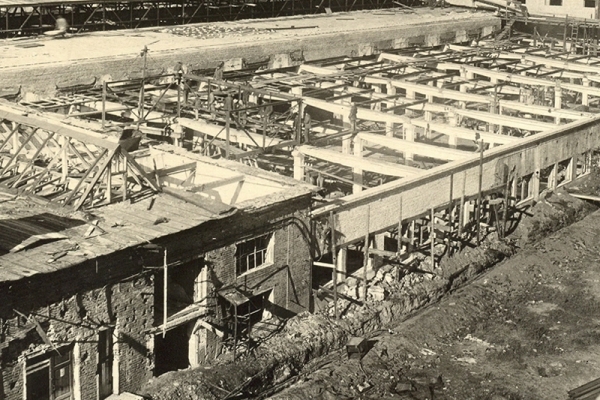
Destroyed factory buildings, 1942
The plant from Leningrad was evacuated to Ufa with the residents of Rybinsk. The giant plant was constructed in Ufa in a very short period of time. The history of the glorious Ufa engine building began with this creation. In 1942 the Germans were pushed back from Moscow and Rybinsk plant began to rise from the ashes. The first echelon with people and the equipment arrived from Ufa to Rybinsk in April. People during the war had the strongest will and faith that the enemy wouldn’t ever return which is simply amazing. There was neither Stalingrad, nor the Kursk Arch yet, the residents of Leningrad were dying of hunger during the blockade, and in Rybinsk there was already working on the restoration of the plant. OKB-250 was transferred from Ufa to Rybinsk under the leadership of V.A. Dobrynin in 1943. The first engine M-62IR for Li-2 aircraft was assembled in the cold sections of the plant by half-starved employees in 1944. This engine is better known as the engine of the legendary "agriculturial aeroplane" - ASh-62IR (designer A. D. Shvetsov). It may seem surprising, but the An-2 planes were produced right up to 2002 and still in service.
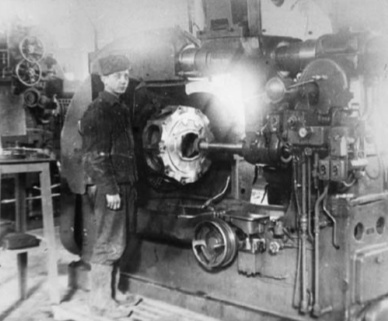
The manufacture of the ASh-62IR engine
After the war started i in Rybinsk began the development of the VD-4K engine (designer V. A. Dobrynin) for the strategic Tu-85 bomber and the development of serial production of the piston ASh-73TK engine (designer A. D. Shvetsov) for the distant strategic Tu-4 bomber. But the plant wasn't limited only to aviation subject. Also there were manufactured the diesel D-36 engine for the Belarus tractor, both the boat The Seagull ML-20 motor, and even trolleybus details and nodes. However the jet era inevitably came which required the establishment of the factory’s brand-new technology industries. In 1955 the production of the turbojets of the VD-7 series (designer V. A. Dobrynin) was created by the Rybinsk designers which subsequently were established on strategic bombers 3M, M-50, the supersonic Tu-22 bombers.
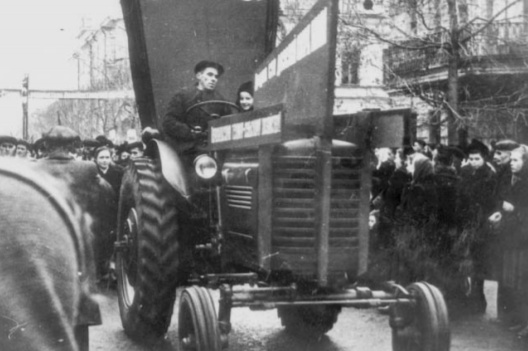
The first Belarus tractor with the diesel from Rybinsk, 1954
In 1960 P.F. Derunov was appointed as the plant manager and the chief designer of the bureau became P.A.Kolesov whose names are associated with the most glorious years of the history of the Rybinsk enterprise. There began the mass production of AL-7F-1 turbojets (designer A. M. Lyulka) for Su-7B strike fighters, the fighter-interceptor Su-9. Under the leadership of Kolesov were created unique aircraft engines for aircraft, ahead of their time, such as a bomber-bomber T-4 Sotka supersonic passenger plane Tu-144 («Distant»), multi-purpose fighter Yak-141 and others. At the same time expanded the production of diesel motors. Products with Rybinsk diesel engines are available in 53 countries around the world.The plant was awarded a second Order of Lenin for its contribution in 1966.
The 1970s is the next milestone in the history of the company. The development of the production of engines of the Perm Design Bureau began under the leadership of P. S. Solovyov. D-30KU and D-30KP engines appeared for the long-haul passenger aircraft IL-62M and transport Il-76. In parallel there were produced the details for the engines of submarines, parts for helicopters, and snowmobiles Buran. The 1980s were designated by the beginning of mass production of the turbojet double-circuit D-30KU-154 engine (designer P. A. Solovyov) for the medium-range passenger aircraft Tu-154M, the creation of the RD-38 engine (designer P. A. Kolesov) for the Yak-38M and other engines for perspective including pilotless aircraft designs.
However in the late eighties the company felt the violation of economic relations in the country. And then followed the collapse of the USSR which raised a question before the staff of the plant of survival in the conditions of political and economic instability. On February 17, 1992 the meeting of Council of labor collective decided to transform the enterprise into the corporation. In the same 1992 the Rybinsk engine-building plant and the Rybinsk design bureau of engine building were transformed to OJSC Rybinsk Motors and OJSC RKBM which was later determined as the main base for the creation of national marine gas turbine engines. The new activity of the Rybinsk plant became the creation and production of gas-turbine engines for power generation which today is one of the main activities of the enterprise. It began production of gas turbines of small and medium power for the energy and gas sectors.
.jpg)
In 2001 there was a merge of JSC Rybinsk Motors (which at that time already included JSC RKBM) and the Moscow JSC A. Lyulka-Saturn, and the formation of JSC NPO Saturn. Today NPO Saturn in cooperation with other UEC enterprises implements a number of large-scale projects in civil and military spheres. t The company is a division of the parent company "engines for civil aviation" - a business unit of UEC. Together with the Safran Aircraft Engines company the Russian-French SaM146 is made for the passenger Sukhoi SuperJet 100 aircraft. For project implementation in 2005 opened CJSC Volgaero. It is a joint production enterprise of JSC NPO Saturn and Snecma Moteurs. The Russian PJSC NPO Saturn is responsible for the development and production of the fan and compressor of low pressure, the turbine of low pressure, general assembly of the engine and its testing, Safran Aircraft Engines manufactures the compressor of high pressure, the combustion chamber, the turbine of high pressure, box units, integration of the power plant.
SaM146 created on the basis of the combination of experience and new technologies of the Russian and Western engine-building is the first gas-turbine engine made in Russia which received the EASA international certificate. Today is considered the possibility of participation of NPO Saturn in the program of creation of the PD-35 engine. Also the company continues the production of D-30KP engines for the aircrafts of the Il-76 family. The AL-55I engine established on the Indian HJT-36 training combat aircraft is developed by CB NPO Saturn. Other area of work of the Rybinsk engine builders are the small-sized gas-turbine engines established on cruise missiles of aviation and sea basing. NPO Saturn is determined also as the center of sea gas-turbine construction within the UEC.
The CEO of JSC UEC Alexander Artyukhov: "The history of NPO Saturn commands respect and sincere admiration. The company has passed a difficult but glorious path of formation of national engine-building industry. Behind the development of each new brand of the unique technology there is hard work of many generations of specialists – designers, engineers, workers, often entirely subordinating the way of life to interests of production and strengthening of the defence capability of the country. So it was both in days of the Great Patriotic War and in post-war period when our country aimed to take leading positions in this high-tech industry".
Now the company produces about 600 turbine engines per year of various subjects - for the sky, land and sea. Geography of enterprise customers covers 30 countries. In general the business structure of PJSC NPO Saturn (following the results of 2015): 70% takes aviation products, 6% - products of a land industrial application, 20% - research and developmet, 4% - other products. All in all during the history of the Rybinsk Motors Group there were designed about 40 types of products, nearly 50 thousand aviation engines for fighters, bombers, transport aircrafts and passenger aircrafts. Today the company consists of: industrial serial field, experimental design office and experimental plant in Rybinsk, engineering center in Perm, STC branches in St. Petersburg and the SEC in Omsk, and also affiliated and joint businesses within implementation of the international programs.
Recently the company has carried out a range of activities for technological upgrade and technical re-equipment of production. So, the new production divisions engaged in the processing of the compressor blades, turbine blades were built using advanced technological processes and modern equipment. NPO Saturn pursues active innovative policy – additive technologies, 3D - modelling, carries out the implementation of details from polymeric composite materials, etc. Innovative Centre of Additive Technologies (CAT) is created in NPO Saturn. The most perspective areas of additive technologies industry are presented there.
In NPO Saturn the new hardware and software system (SHSS) with a productivity of 114 of teraflops was put into operation developed by one of the Russian companies this year. The total amount of memory of a SHSS supercomputer is14,5 TB, the total number of processors of a computing field – 204, the total number of cores – 2808. Due to combining of high-performance computing resources - AL-100 clusters (in 2008 this supercomputer was recognised as the most high-productive in the industry of Russia and the CIS) and new SHSS in a single computational cluster there is created the unique supercomputer center in NPO Saturn. It will be used for the implementation of complex long-term, resource-intensive computations, for the optimisation of design developments of the main range of production of the enterprise.
And of course, we should also mention the contribution of the factory workers in the social sector and not only the factory. In addition to its own well-developed social and sports infrastructure, thanks to the enterprise, there have been actively developing social programs in Rybinsk: Cultural Centre was built, football and waterskiing stadiums, swimming pools, kindergartens, recreation centres, millions of square meters of housing, and many other objects of social and industrial infrastructure in the region. Today PJSC NPO Saturn has more than 12 000 employees, 12 000 pieces of equipment, 1 million sq.m of production space. Total number of employees including subsidiaries and associated companies is 14 000 people.
According to strategic plans of development and the planned personnel requirements NPO Saturn implements plans of interaction with profile educational institutions and professional orientation programs for the purpose of involvement of potential future employees. Annually the company independently employes 200 young specialists (of whom 66% graduates of higher educational institutions). Now young employees aged from 16 up to 35 years make about a third of employees of the company.
The deputy CEO – the managing director of PJSC NPO Saturn Victor Polyakov: «Behind this impressive Anniversary there are tens of thousands of released engines, destinies of several generations, their everyday great work for the good of the country. The activities of the Rybinsk engine-building plant have repeatedly been honoured with the highest state awards of the Soviet Union and today are highly appreciated by the Russian state for its contribution in strengthening national defence, energy and transport security of our homeland».





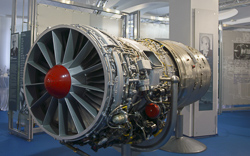
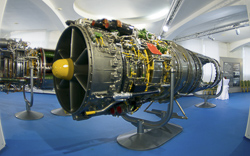
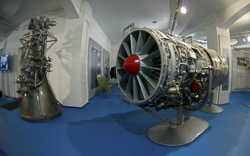
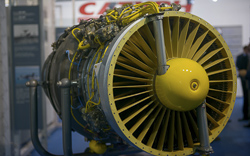
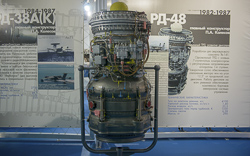
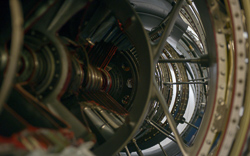
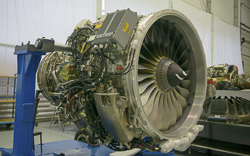
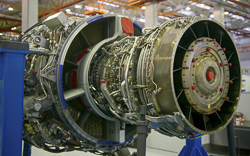
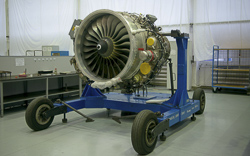
.jpg) The CEO of JSC UEC Alexander Artyukhov: "The history of NPO Saturn commands respect and sincere admiration. The company has passed a difficult but glorious path of formation of national engine-building industry. Behind the development of each new brand of the unique technology there is hard work of many generations of specialists – designers, engineers, workers, often entirely subordinating the way of life to interests of production and strengthening of the defence capability of the country. So it was both in days of the Great Patriotic War and in post-war period when our country aimed to take leading positions in this high-tech industry".
The CEO of JSC UEC Alexander Artyukhov: "The history of NPO Saturn commands respect and sincere admiration. The company has passed a difficult but glorious path of formation of national engine-building industry. Behind the development of each new brand of the unique technology there is hard work of many generations of specialists – designers, engineers, workers, often entirely subordinating the way of life to interests of production and strengthening of the defence capability of the country. So it was both in days of the Great Patriotic War and in post-war period when our country aimed to take leading positions in this high-tech industry".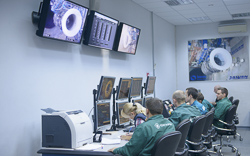
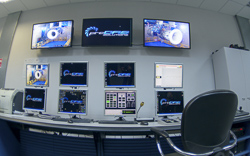
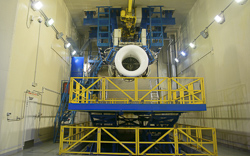
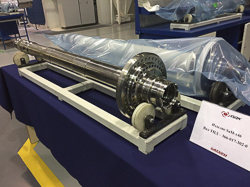
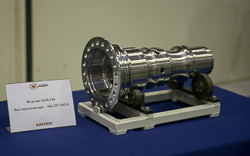
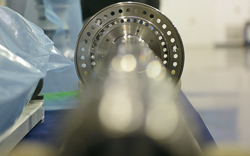
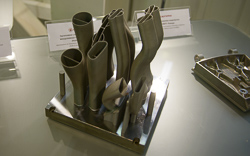
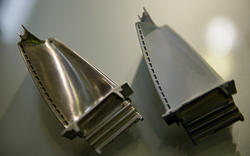
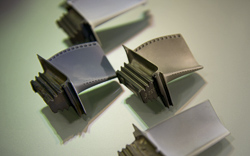
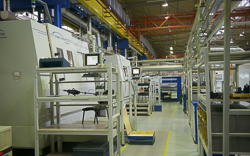
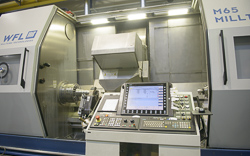
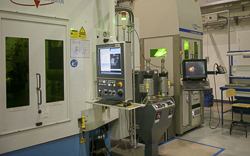
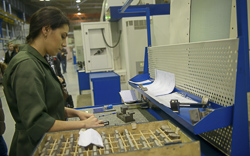
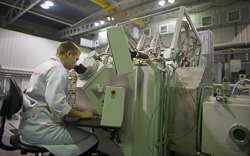
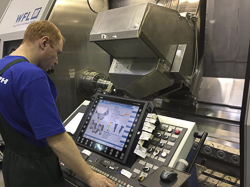
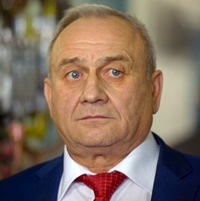 The deputy CEO – the managing director of PJSC NPO Saturn Victor Polyakov: «Behind this impressive Anniversary there are tens of thousands of released engines, destinies of several generations, their everyday great work for the good of the country. The activities of the Rybinsk engine-building plant have repeatedly been honoured with the highest state awards of the Soviet Union and today are highly appreciated by the Russian state for its contribution in strengthening national defence, energy and transport security of our homeland».
The deputy CEO – the managing director of PJSC NPO Saturn Victor Polyakov: «Behind this impressive Anniversary there are tens of thousands of released engines, destinies of several generations, their everyday great work for the good of the country. The activities of the Rybinsk engine-building plant have repeatedly been honoured with the highest state awards of the Soviet Union and today are highly appreciated by the Russian state for its contribution in strengthening national defence, energy and transport security of our homeland».





